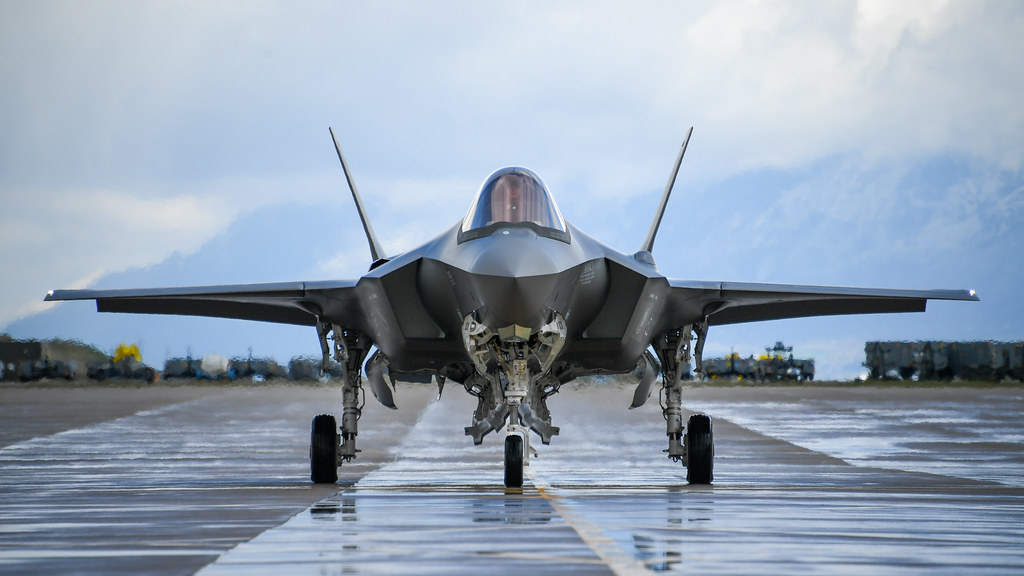
The ongoing war in Ukraine continues to offer intriguing accounts from those involved in various capacities. Despite not having access to the most advanced technologies, Ukraine has demonstrated impressive self-sufficiency, particularly in the realm of military intelligence and data collection. Both sides rely heavily on such data, but while Russia depends solely on beyond-visual range intelligence capabilities, Ukraine leverages the support of NATO member countries, most notably the United States.
One captivating story comes from Craig Andrle, a US Air Force colonel stationed in Germany and commander of the 388th Fighter Wing. Nearly a year after the Russian invasion of Ukraine, Andrle shared with the media how his team employed F-35 reconnaissance missions to gather critical data. In a war where information is paramount, the colonel underscored the importance of his team’s role, while also noting that they never breached Ukraine’s airspace.
According to Colonel Andrle, the task of data collection has been accomplished admirably by him and his stealth aircraft. This is a crucial function of the F-35, contrary to the popular belief among non-experts that it is primarily designed for combat. Rather, the aircraft’s purpose is to secure victories without engaging in direct conflict.
“But the jet is always sensing, gathering information. And it was doing that very, very well,” said Colonel Andrle.
S-300PMU-1
The “flying supercomputer” plays a vital role in providing situational awareness, which is a significant advantage for those who utilize it in the air. As the nature of warfare evolves, the number of troops on the ground is becoming less crucial than the accurate geolocation of the enemy and their accompanying platforms.
Despite its capabilities, even the most advanced technology is not infallible. Colonel Andrle recounted a perceived setback during a mission when military intelligence provided information about the location of a Russian S-300PMU-1 air defense system. However, despite the data provided, he and his aircraft were unable to correctly identify the system.
According to Colonel Andrle’s, his F-35 was not able to identify the S-300PMU-1 since the Russian air defense was operating in “a war reserve mode”.
“This is a regime we have not seen before,” explained the Colonel.
According to military experts, the role of Russian air defense systems in the conflict against Ukraine was not as significant as initially believed. Instead, these systems were more useful in providing situational awareness over the airspace.
The most noteworthy ground-to-air battle of the war took place at the start of the conflict, pitting an S-400 system against a Ukrainian Su-27 over Kyiv. The S-400, an upgraded version of the S-300, successfully shot down the Ukrainian fighter from a distance of 150 km using its powerful radars stationed in Belarus. This moment in the conflict showcased the Russian S-400’s capabilities and why it has often been a subject of controversy in recent times.
In contrast, the US places significant reliance on its F-35 fleet. While these are formidable combat aircraft with the ability to reveal enemy “secrets,” Washington even plans to replace the legendary F-16 fighter jets with these fifth-generation fighters as the backbone of its Air Force. In contrast, Russia does not have the same volume of fifth-generation fighters. While the Su-57 is in serial production, it cannot be compared to the American production of the F-35.
In order to maintain its edge, Moscow relies on its ground-based air defense systems for situational awareness. The use of the S-300PMU-1 to evade detection by the F-35 is a deliberate move. This is the latest modernized version of the S-300, developed at the turn of the millennium, with enhanced capabilities compared to its predecessor, the S-300PM. The S-300PMU-1 is equipped with longer range and larger missiles, the 48N6, and has significantly increased radar and system ranges, speed, and performance. It also features improved TVM targeting and ABM capability, and is equipped with the more powerful 30N6E TOMB STONE radar.
However, this is not the first time that Russian and American air technologies have clashed, as evidenced by their engagement in Syria. In mid-2010, Russian air defense systems gathered valuable information on F-22 Raptor operations in the region. Perhaps this is why the F-35 was not deployed in the American campaign in Syria.




